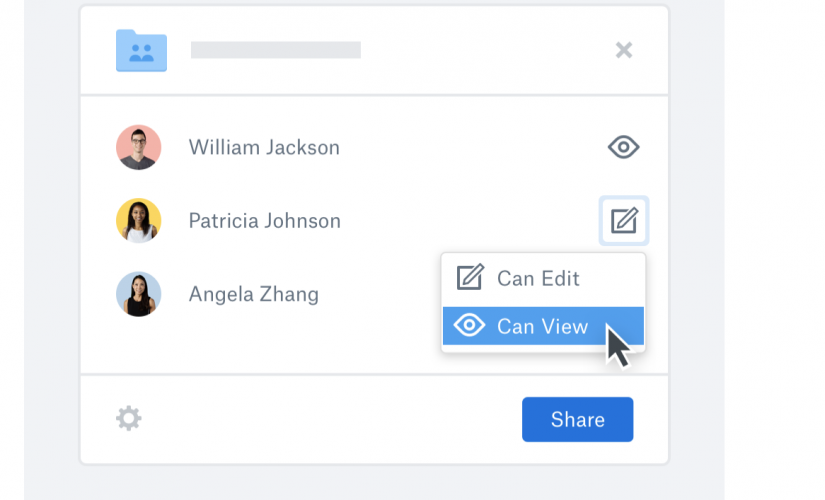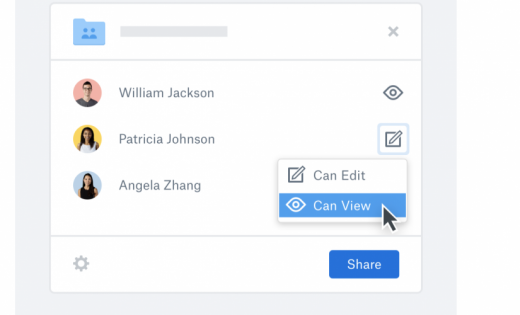What to Consider When Leveraging File Sharing
What to Consider When Leveraging File Sharing

File sharing with your team, partners, vendors, and customers has raised productivity and efficiency levels to new heights. However, it’s also led to some challenges that must be addressed in order to continue leveraging the benefits of the process of file sharing.
In the early days of file and folder management technique, teams were happy to collaborate on a level that didn’t involve sending endless email attachments after every document revision. Instead, they only had to access to one master document and one gallery for visuals that could be accessed from any device.
Now, there are larger security issues. Greater use of temporary freelance talent, the availability of sensitive data and proprietary information, file sharing has become a more complex process. Data can now involve many decisions before ever leaving it’s owner.
Before you share a file or folder, ask yourself these questions:
What is the individual’s role?
First, is this person internal staff or an external add-on, like a freelancer, customer, or vendor? Knowing what they do for the company will dictate what level of files and folders they should be able to access. Not only does this vetting protect critical information, but it also ensures nothing is inadvertently deleted or changed.
For example, if the individual’s role is to produce content, then they would only be provided access to one folder where they could share their work. However, they might also be provided access to a photo or graphics folder to enhance their content.
How will they be using the files or folders you share?
The purpose of accessing files is also important. Think about who will need to review, comment, edit, and approve what is in a particular file before sharing it.
The answers to this question will guide the type of access you give. You may set a file to “view only” when that individual only needs to read a file versus editing access on piece. Even in view-only mode, you can still allow them to make comments; they just can’t edit any information out or add-in the piece.
Be aware that not granting editing access can also hang you up on getting the work delivered if the editor or others have to sit around and wait for your permissions. If you put out a view only copy of something, stay attentive to the document so you can add in the recommended edits and changes that will be suggested.
There may be other situations where view only means online access only. You can disable an individuals download capability. This ensures none of the information is copied or taken for some other purpose.
If the individual needs to use a folder that is full of photos, memes, or video footage, then you can create a subfolder with only those files relevant to their project rather than access to the entire gallery. Alternatively, you can choose to share one or more image files — or have a separate individual with higher credentials add in these details.
What length of time will the individual work with your company?
Since many projects involve a freelancer, it’s important to limit the amount of time each person has access to certain files and folders. One of the latest features available that addresses access time is a tool that lets you set an expiration date for file sharing.
Once you set the expiration date, you won’t have to remind yourself to change access and passwords when the project is finished and the freelancer is no longer involved. If you determine that a freelancer will remain onboard with your company, you can remove the expiration date, giving them the ongoing access you grant a regular employee.
Does the individual have a specific clearance level?
With growing security concerns faced by many companies, it’s critical to consider clearance level as a parameter for file sharing decisions.
For example, government organizations or companies that are contracted to do work for governments must undergo security checks for each person involved. From there, individuals on the team are provided with a clearance level that dictates what they can read or work on.
Consider that all of the “Wiki-leaks” situation would likely not have been an issue if this individual had not been a sub-contractor. Stats confirm that your regular employees are less likely to try to hurt your company.
Align file sharing accessibility with your company’s security framework. This helps to ensure no information is left vulnerable within a subfolder or stray file.
What information about the project do you need to track?
When projects involve numerous team members, all of whom may be adding comments or edits, it’s critical to determine how many “chefs” you want in the file “kitchen” and how you can track what they do while there. This is where using the edit “post-its” out to the side of the doc are quite valuable.
For example, you may want to see who has looked at the file to ensure everyone is staying current on their responsibilities. If there is an issue related to the changes, it helps to see a version history so you know who made what changes and when in order to resolve those disputes. Or, you can make sure that all contributors add “side” suggestions and only have one person as a “doc admin” with permission to make final changes.
Which individuals in your company should receive notification for a particular project? Not everyone assigned to a project needs to get alerts about edits or document changes. This article will guide how to set the notification filters.
Your company’s overall process of file sharing.
File sharing delivers convenience, collaboration, and productivity. However, to get the most out of it while maintaining data security, you need a thoughtful approach for file and folder management. That means considering each person’s role, project involvement, security level, and length of time with the company — or length of time with access to this particular doc.
These few quick considerations will help you determine filters and access levels for everyone on your team. Have an email that explains your company doc process in plain language that can be quickly sent to those who need to know; this includes your freelancers.
By formalizing the file sharing process, a standard can be established for consistent actions and results. Everyone from the existing team to your new hires and future freelancers will know how your file sharing process works.
This is a sponsored post for Dropbox. All opinions are my own. Dropbox is not affiliated with nor does it endorse any products or services mentioned.
The post What to Consider When Leveraging File Sharing appeared first on ReadWrite.
(4)


